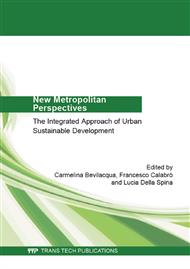p.483
p.489
p.495
p.503
p.508
p.514
p.518
p.527
p.536
Infrastructural Systems toward the Valorisation of the History of Architecture: The Case of the Metro-Art in Naples
Abstract:
Since the Industrial Revolution, cities have changed their identity and the transport systems have produced a strong impact, rather than on their social-anthropological character, on the morphology of the urban pattern and on the development of the vertical dimension of the architectural volumes.This mutation leads, among other things, to a significant transformations in the transition between the 19th and 20th centuries, according to the transition between the historicist eclecticism of previous centuries and the new deal of the belle époque. Paradigmatic and representative of the century are the underground stations built in Vienna and Paris.The case, related to the contemporary, is Naples where the metro-art stations, unlike what happened before, have the dual characteristic of being different from one another- so to provide an extensive collection of contemporary architecture being part of a culture that includes the evolution of taste and the same behaviour of doing and enjoying art.A system born as transport engineering becomes today “Transit Museum” with the study of urban history from archeology to architecture and figurative art.
Info:
Periodical:
Pages:
508-513
Citation:
Online since:
June 2014
Authors:
Permissions:
Share:
Citation:


